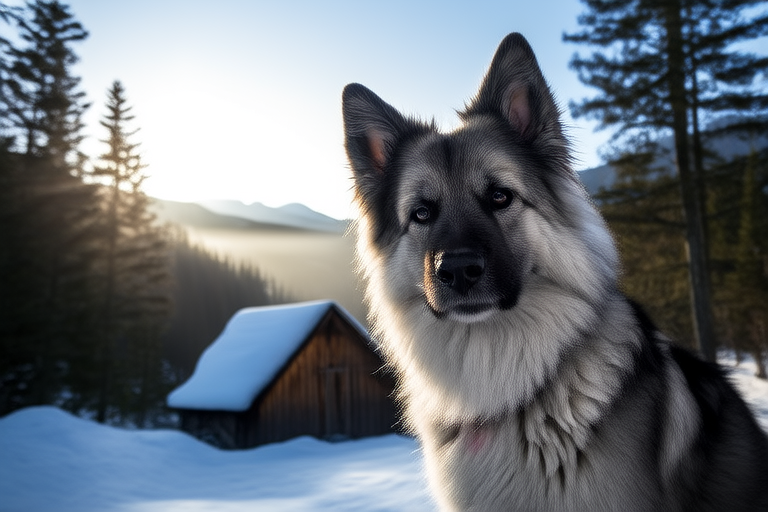Adopting a Norwegian Companion Animal: What Every Owner Should Consider
Welcome to the world of Norwegian companion animals! Whether you’re considering adopting a Norwegian Forest Cat, a Lofoten Sheepdog, or another breed native to Norway, this guide will help you understand what it takes to be a responsible owner. From understanding the unique traits of these breeds to the necessary care and health considerations, we’ll cover everything you need to know before bringing your new furry friend home.
Understanding the Unique Traits of Norwegian Breeds
Each breed has its own distinct characteristics that make them special companions. The Norwegian Forest Cat, for instance, is known for its thick, water-resistant coat and friendly nature. These cats are highly adaptable and enjoy both indoor and outdoor environments. They are also excellent climbers and love to explore.
The Lofoten Sheepdog, on the other hand, is a working dog originally bred to herd sheep. They are intelligent, loyal, and very active, requiring plenty of mental and physical stimulation. This breed thrives in environments where they can run and play freely, making them ideal for families with large yards or those who enjoy outdoor activities.
Another notable breed is the Husky mix, which combines the striking appearance and high energy of the Siberian Husky with the adaptability of various other breeds. Huskies are known for their striking blue eyes and thick fur, but they require a lot of attention and exercise. They are not recommended for first-time dog owners due to their independent nature.
Necessary Care and Health Considerations
Caring for a Norwegian breed involves more than just feeding and exercising your pet. Each breed has specific needs that must be met to ensure their well-being.
- Diet: Proper nutrition is crucial. Norwegian Forest Cats, for example, benefit from a diet rich in protein and fats to maintain their thick coats. Lofoten Sheepdogs, being active dogs, require high-quality dog food that supports their energy levels.
- Grooming: Regular grooming helps keep your pet’s coat healthy and free from tangles. The Norwegian Forest Cat’s long fur requires weekly brushing to prevent matting. Similarly, the Lofoten Sheepdog’s coat should be brushed at least once a week, especially during shedding seasons.
- Veterinary Care: Regular check-ups are essential. Vaccinations, dental care, and parasite prevention are all part of maintaining your pet’s health. It’s important to find a veterinarian familiar with Norwegian breeds, as they may have specific health concerns.
- Mental Stimulation: Providing mental challenges through toys, puzzles, and training sessions can help prevent boredom and destructive behavior in both cats and dogs.
Expected Costs Involved in Ownership
Becoming a pet owner comes with financial responsibilities. Here’s a breakdown of the costs you might expect:
- Initial Costs: Adoption fees vary depending on the shelter or breeder. Additional expenses include microchipping, spaying/neutering, and initial vaccinations.
- Ongoing Costs: Monthly expenses include food, treats, toys, and grooming supplies. Regular veterinary visits and medications should also be budgeted for.
- Emergency Preparedness: Setting aside funds for unexpected medical emergencies is wise. Pet insurance can be a valuable investment.
- Training: Investing in professional training can save money in the long run by preventing behavioral issues.
Tips for Successful Adoption
Adopting a pet is a significant commitment. Here are some tips to ensure a smooth transition:
- Research: Learn about different breeds and their specific needs. Understand the time and effort required for each breed.
- Prepare Your Home: Create a safe and comfortable space for your new pet. Remove any hazards and provide necessary supplies like bedding, litter boxes, and toys.
- Patience: Give your pet time to adjust to their new environment. Be patient and understanding as they learn the rules and boundaries of your household.
- Consistency: Establish routines for feeding, exercise, and bathroom breaks. Consistency helps pets feel secure and understand expectations.
Resources for New Owners
There are many resources available to support new pet owners:
- Local Shelters and Rescues: Many shelters offer adoption counseling and post-adoption support. They can provide information on local trainers, veterinarians, and pet-friendly events.
- Online Communities: Join forums and social media groups dedicated to Norwegian breeds. These communities can be invaluable for advice and support.
- Pet Stores: Many stores offer workshops and classes on pet care. They can also provide recommendations for products and services.
- Professional Services: Consider hiring a professional trainer or behaviorist if you encounter challenges with your pet’s behavior.
Conclusion
Adopting a Norwegian companion animal is a rewarding experience that brings joy and companionship into your life. By understanding the unique traits of these breeds, providing necessary care and health considerations, preparing for the associated costs, following tips for successful adoption, and utilizing available resources, you can ensure a happy and healthy relationship with your new pet. Remember, every pet deserves a loving home, and you have taken the first step towards providing one.
